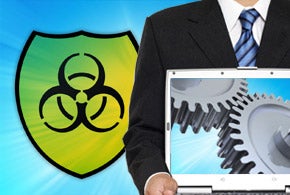Security
 Breaches Are Widespread
Breaches Are Widespread
76% experienced a damaging security breach in the last year. Only 14% reported no “notable” security breaches.
 Top Security Risks
Top Security Risks
Eight out of 10 said end users with malware and viruses are the biggest risk to security, followed by password compromise and cyber-attacks.
 Prevention Tops IT Issues
Prevention Tops IT Issues
50% consider preventing cyber-attacks the most important, or at least one of the top three, IT issues. Only 20% do not consider cyber-attacks a major issue.
 Data Leaks
Data Leaks
71% reported that sensitive information was compromised as a result of a breach.
 Action Plans
Action Plans
Nearly 50% of respondents added or reviewed security solutions for updates after their last serious breach, followed by establishing or updating security best practices (45%).
 Bigger Budgets
Bigger Budgets
44% of respondents increased their IT security budgets after a breach.
 Trusted Vendors
Trusted Vendors
Eight in 10 respondents are familiar with Symantec and Microsoft, and four in 10 use them for protection against cyber-attacks.
 The Big Three
The Big Three
44% of respondents believe Symantec offers the most comprehensive protection against cyber-attacks, followed by Cisco (36%) and Intel’s McAfee (32%).
 Tech Partner Selection
Tech Partner Selection
Nine in 10 respondents rate systems reliability and tech expertise as most important at the evaluation and request for proposal (RFP) stages in the purchasing process for IT security products.
 Seeking Information
Seeking Information
75% rated tech content sites and peers/colleagues as the most important sources for security information, followed by analysts (59%), print pubs (47%), tech blogs/pundits (46%) and IT manufacturer sites (45%).
 Buyer Resources
Buyer Resources
65% of respondents rated product sheets as the most important sources of information during the initial phase of a product evaluation. More than 50% said vendor comparison guides, white papers and product sheets are important.
 RFP and Product Demos
RFP and Product Demos
During the RFP stage, 54% of respondents rated product demos as the most important source of information. More than 40% rated vendor comparison guides, case studies, face-to-face networking and product sheets as important.

